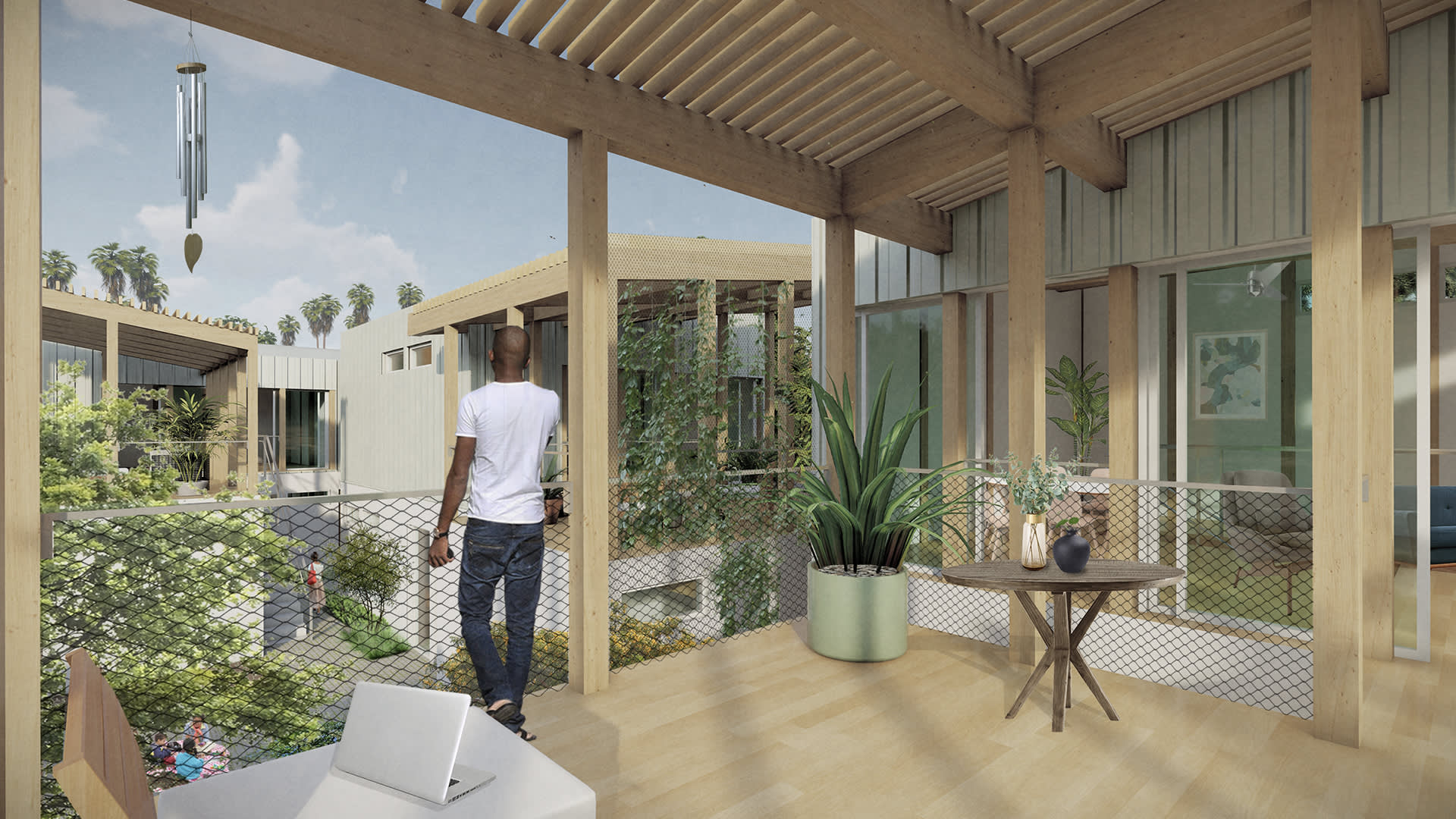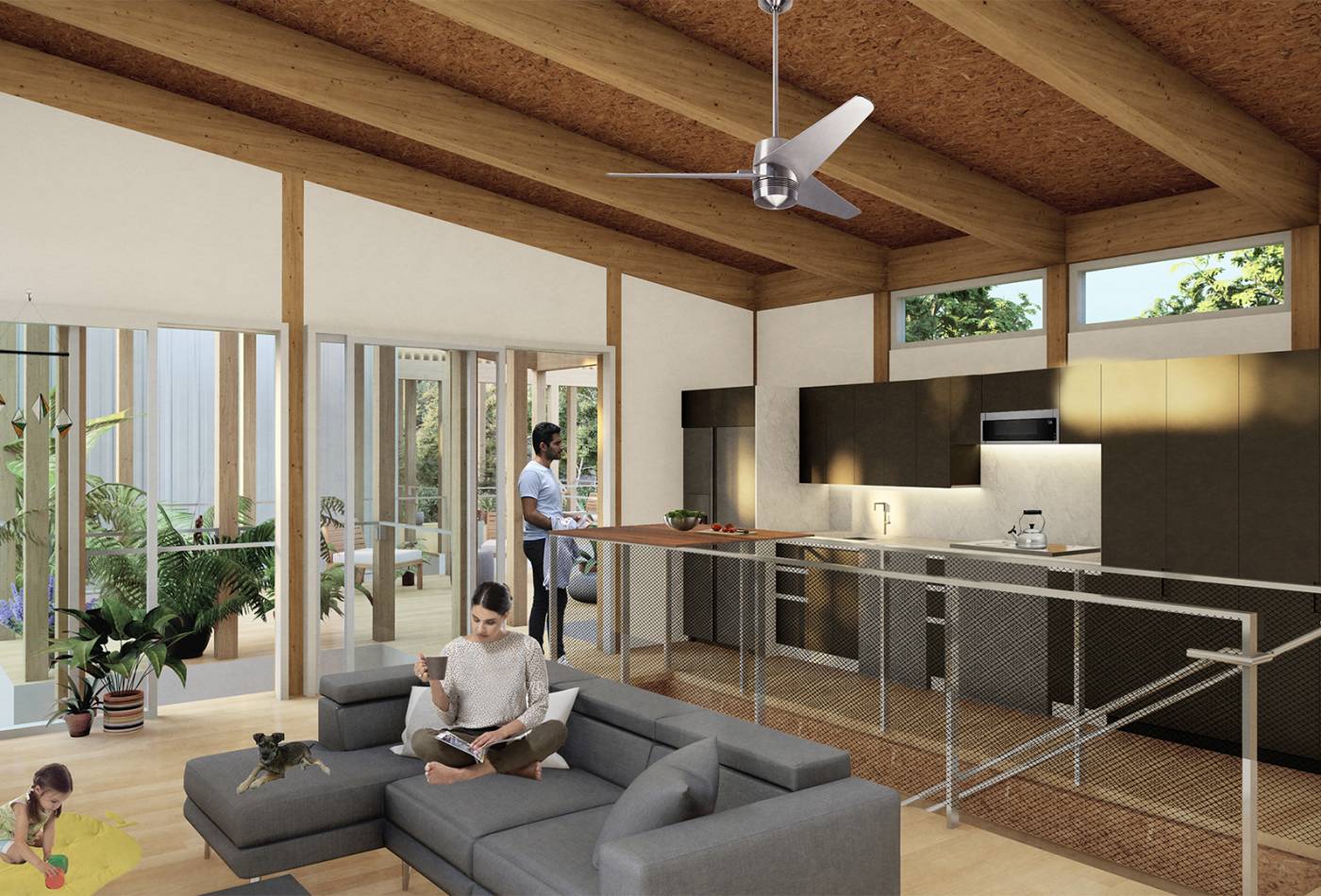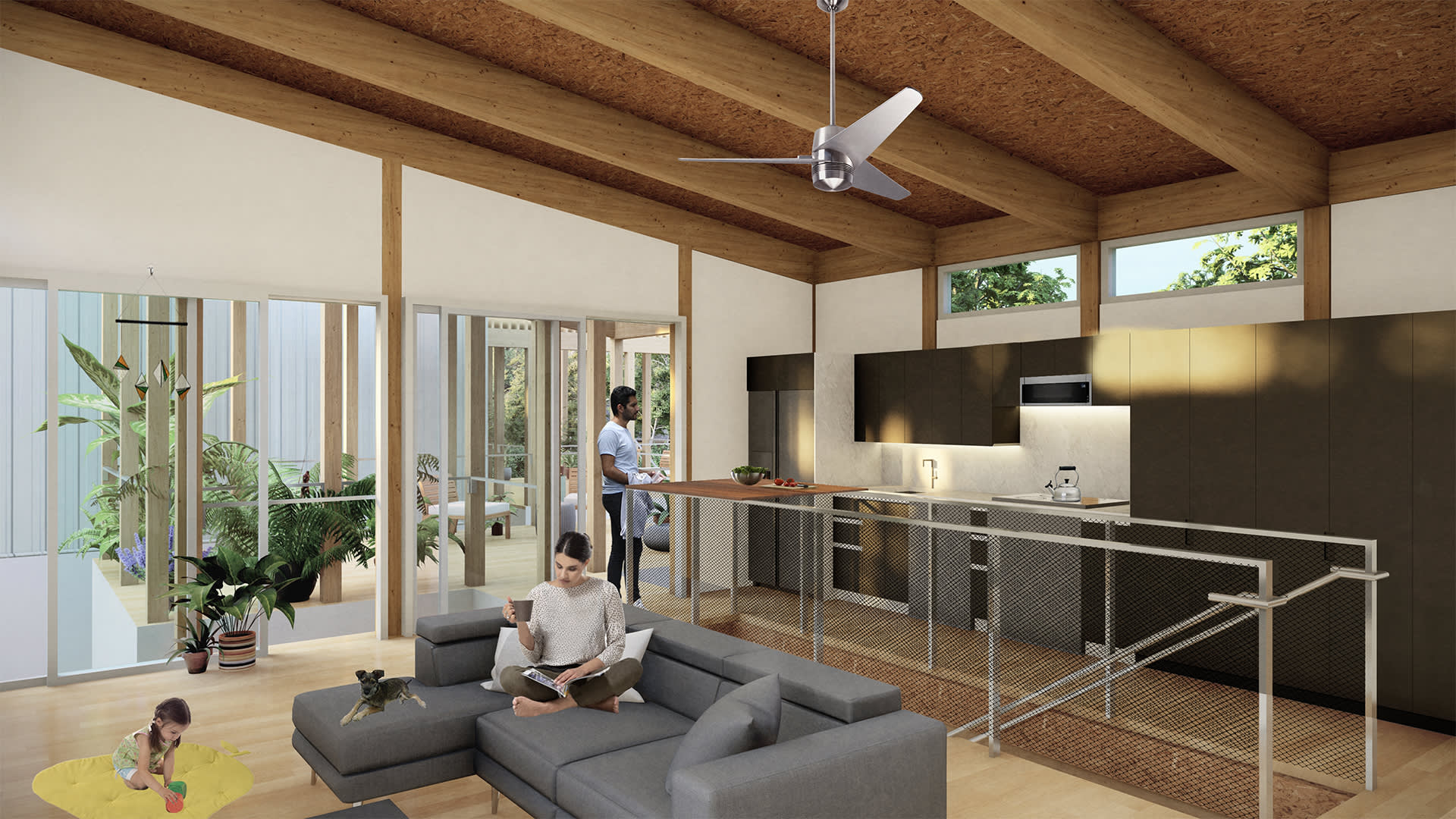\
Hidden Gardens: A Balance Between Inside and Outside
As Los Angeles neighborhoods continue to densify, the future of multi-family housing depends even more on finding the right balance between indoor and outdoor space. This balance is critical to the health of urban residents and the success of the places they call home. Planning for density and open space creates and opportunity for a more porous city with spaces that increase access to natural light, landscape, and human-centered places. Hidden Gardens is a model for a versatile framework that creates relationships between indoor and outdoor spaces, and offers a compelling connection between views, neighbors, and the city. These spaces lead to a stronger sense of community within the complex and neighborhood by fostering dialogue and social connections.

\
Fourplex Strategy
Hidden Gardens places three individual two-story housing blocks, each inter-connected with multiple variations of internal and external spaces make the whole site feel like a series of gardens. This porosity creates spaces between the units that act as a buffer to help with privacy and noise reduction while allowing each space to have access to natural daylight and ventilation. The model also grants residents their own private indoor and outdoor spaces where they can relax and enjoy themselves within the garden setting. Even though there is more building surface than a typical fourplex apartment, the use of Structural Insulated Panels (SIPs) as a construction method allows the units to be erected at a faster speed than traditional stick frame construction at an affordable cost.
The Community Easement provides a community-driven space for planned and spontaneous interactions, enhancing the connection between the residents, their families and neighbors. The front portion of the parcel could be managed and maintained by a Community Land Trust (CLT) to create a passive community park or community garden serving as a productive landscape that also acts as a buffer between the public way and the private spaces.

While the car remains an iconic form of transportation in Los Angeles, the proposed model allows for flexibility to host parking dependent on specific community needs. The site can host one parking spot per unit, up to four parking spots on-site inclusive of an accessible parking stall, that can be supplemented with electric vehicle charging, or bike storage to provide residents with access to a variety of mobility options regardless of proximity to public transportation. The public way can be treated as Green Alleys and Slow Streets to create protected lanes and additional open space for pedestrians to run, bike or scoot through their neighborhood.

\
Sustainable Communities
Hidden Gardens allows densification to occur organically, similar to a network of emerging fields between the built environment and the neighborhood it exists in. Each unit allows for a range of flexible uses over time that adapt to various needs throughout life and evolving family composition. This adaptability encourages multi-generational living, helps maintain the culture, ideals and family values currently present among the many communities of Los Angeles.
Comprehensive personal wellness remains a guiding principle for growth. This framework promotes a balance of both private and social spaces, both indoor and outdoor, for residents to work, create, play, and relax. Density is increased without compromising adequate space, light and airflow throughout the property, creating a healthy environment and connection to nature, even in the city.
Densification requires that each parcel carry greater ecological performance within reduced landscaped areas. The landscape actively seeks to expand the tree canopy, furnish urban agriculture opportunities for residents, and provide lowwater, climate appropriate planting with stormwater gardens positioned to capture and infiltrate rainwater.

Passive and active building strategies are implemented to create a Zero Net Building model for Los Angeles by harnessing existing solar and wind patterns for resident comfort throughout the year. The placement of the structures, trellises, clerestory windows, deciduous planting, and renewable energy sources help to achieve carbon neutrality and status as a Zero Energy Community.

Expansion of housing opportunities for Angelenos is grounded in economic, environmental and social issues, however the soul of housing embraces human centered design principles such as light, access to nature and flexibility with the human experience at the forefront.







